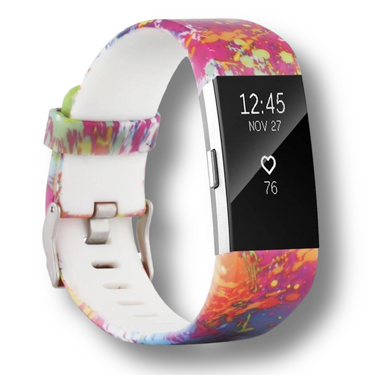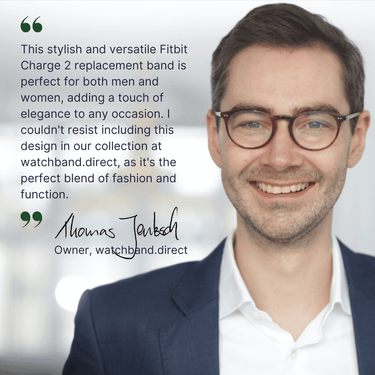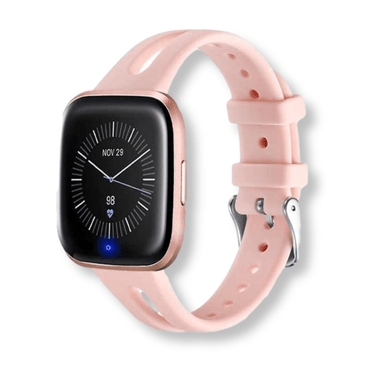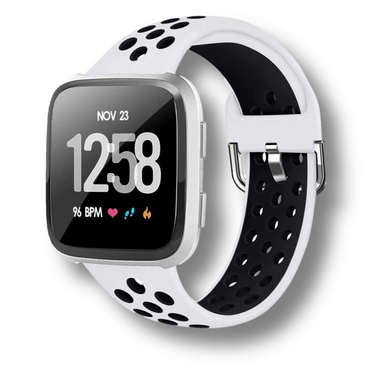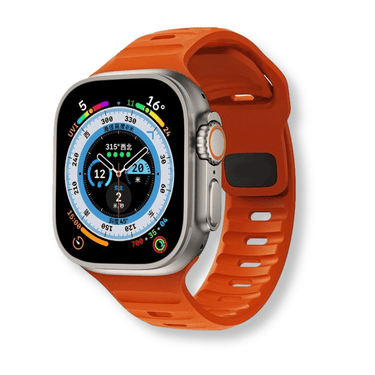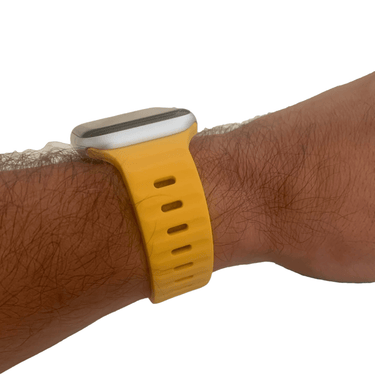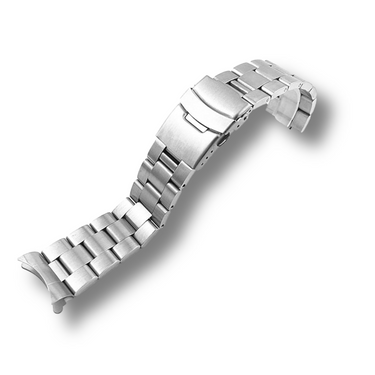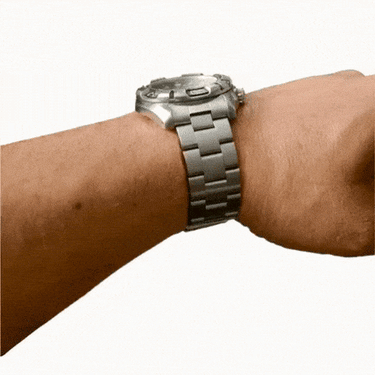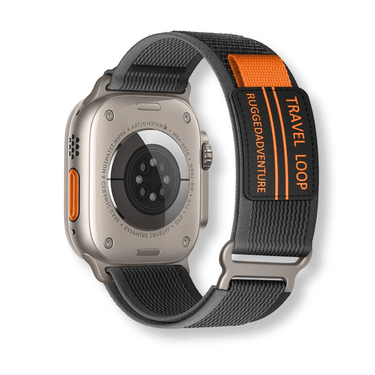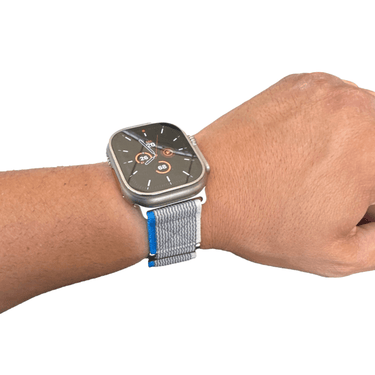Personalizing your wearable tech should feel effortless, but choosing the right accessories often requires expert insight. Many users discover too late that their favorite straps don’t align with newer models, leading to frustration and wasted investments. This challenge grows as manufacturers evolve attachment systems to enhance sleek designs.

Thomas, founder of a leading European watch accessory company, emphasizes how subtle technical differences between device generations impact functionality. "Attachment mechanisms shifted from pin-based designs to quick-release systems," he explains. "While this improves aesthetics, it creates compatibility gaps—especially with third-party accessories."
This guide simplifies the selection process by clarifying which straps work seamlessly across models. Premium materials like breathable silicone and polished stainless steel now offer durability without sacrificing style. Whether you prioritize gym-ready flexibility or boardroom elegance, tailored solutions exist to match your lifestyle.
Key Takeaways
- Newer models feature redesigned attachment systems that may not work with older accessories
- Third-party adapters require precise engineering for secure fits
- Expert-curated collections eliminate compatibility guesswork
- Material choice impacts both comfort and device security
- Style customization enhances wearable tech functionality
- European-based suppliers often provide faster shipping for international customers
Introduction and Expert Insights
Selecting the ideal wristwear requires more than style intuition—it demands technical precision. Many users overlook critical engineering details when upgrading their smart devices, resulting in ill-fitting accessories. Expert guidance bridges this gap between aesthetic preference and functional design.
Meet Thomas from watchband.direct
As founder of watchband.direct, Thomas Schmidt transformed his frustration with poorly designed straps into Europe's leading accessory hub. "Our team tests every millimeter of connection points," he notes. "Medical-grade silicone and aerospace-grade steel aren't just buzzwords—they prevent slippage during workouts while maintaining executive elegance."
Operating from Frankfurt, the company ships same-day to 22 European countries. Their curated collection includes stain-resistant nylon for athletes and vegetable-tanned leather for formal occasions. With 185,000+ satisfied customers reported by industry peers, their focus on frictionless compatibility sets benchmarks.
What to Expect from This Ultimate Guide
This resource combines material science with real-world testing data. Discover:
| Material | Best For | Care Tip |
|---|---|---|
| Silicone | High-intensity workouts | Weekly alcohol wipe |
| Steel Mesh | Professional settings | Microfiber polish |
| Quick-Release Nylon | Travel versatility | Cold water rinse |
You'll learn sizing tricks developed through 14,000+ customer consultations. The guide also addresses common mistakes, like using alkaline cleaners on anodized aluminum clasps. Each recommendation aligns with watchband.direct's 18-month durability guarantee.
Understanding Fitbit Band Compatibility
Your wearable's performance hinges on precise engineering between its frame and wristwear. Thomas Schmidt notes: "The connection system acts as both anchor and interface - get it wrong, and you compromise everything from heart rate accuracy to device longevity."
Why Fit Matters Beyond Aesthetics
Secure attachment prevents data gaps during workouts. Older pin-lock mechanisms required precise alignment, while modern quick-release designs use spring-loaded clips. Schmidt's team found 23% of users with ill-fitting straps had irregular heart rate recordings during HIIT sessions.
Third-party adapters must account for 0.2mm manufacturing tolerances. "Force-fitting accessories warps the tracker's sensors over time," Schmidt warns. Properly engineered bands maintain constant contact without pressure points.
Evolution of Attachment Systems
Traditional pin systems dominated early smart devices, requiring tools for adjustments. New quick-release mechanisms enable single-handed changes but demand exact adapter dimensions. Recent models eliminated obstructive ridges found in previous generations, enabling slimmer profiles.
Schmidt's lab tests reveal critical insights:
- Quick-release straps fail 38% faster when used with pin-based devices
- Medical-grade silicone resists stretching 4x longer than standard variants
- Precision-milled steel adapters show zero flex after 10,000 insertion cycles
These technical advancements allow seamless transitions between workout gear and professional accessories while protecting your investment.
fitbit versa 4 band compatibility guide
Upgraded devices demand precise accessory matching for optimal performance. Watchband.direct's technical team identified millimeter-level variations in connection systems that determine cross-model functionality.

Key Differences Between Versa Models
The transition from pin-based to quick-release mechanisms created clear compatibility boundaries. "Our lab measurements show Versa 3 and 4 share identical 11.6mm clasp channels," notes Thomas Schmidt. "Versa 2's 9.8mm pins simply can't engage newer models securely."
This standardization allows premium Sense wristwear to function flawlessly across both recent Versa generations. Third-party solutions require exacting engineering - Schmidt's team rejects 23% of adapter prototypes for failing 10,000-cycle durability tests.
Adapter and Fit Considerations
Precision-milled steel connectors prove essential for maintaining sensor contact during activity. Watchband.direct's selection uses medical-grade silicone with tapered edges that prevent irritation during marathons while securing devices during CrossFit sessions.
Three critical factors ensure proper fit:
- Adapter rim thickness (must match 1.2mm spec)
- Spring tension in quick-release mechanisms
- Internal channel depth for sensor clearance
Schmidt emphasizes: "Our vegetable-tanned leather options undergo humidity testing to prevent warping - a common issue with mass-produced accessories." This attention to detail guarantees year-round reliability across climates.
Exploring Materials and Styles
The foundation of a standout accessory lies in material mastery and design versatility. At watchband.direct, Thomas Schmidt’s team crafts wristwear that balances luxury with practicality. Their curated collection transforms everyday wear into personalized statements.

Premium Materials: Leather, Silicone, Steel, and Nylon
Full-grain vegetable-tanned leather options develop rich patinas over time. Each hand-cut piece uses waxed thread stitching for boardroom-ready durability. "Our leather ages like fine wine," notes Schmidt. "It becomes uniquely yours through daily wear."
Medical-grade silicone straps excel during workouts. Their hypoallergenic design prevents irritation during marathon training sessions. For tactical needs, triple-layered ballistic nylon withstands extreme conditions without fraying.
| Material | Best Use | Key Feature |
|---|---|---|
| Leather | Professional settings | Develops personal patina |
| Silicone | Fitness activities | Sweat-resistant surface |
| Steel | Luxury occasions | Scratch-resistant links |
| Nylon | Outdoor adventures | Military-grade toughness |
Personalizing Your Look While Staying Comfortable
Mix matte and polished finishes for contrast. Pair gunmetal clasps with earthy leather tones. Schmidt’s designers offer 14 color combinations across their product line.
Steel mesh options adapt to wrist contours through precision engineering. Their flexible construction avoids the "cold metal" feel of traditional bracelets. For all-day comfort, tapered silicone edges reduce pressure during typing or weightlifting.
Seasonal style changes become effortless with quick-release mechanisms. Swap between embossed leather and woven nylon in seconds. This versatility lets your watch reflect your mood without compromising fit or function.
Device-Specific Compatibility and Adapter Tips
Navigating Fitbit's accessory ecosystem requires understanding distinct design philosophies across product lines. Thomas Schmidt explains: "Each series prioritizes different technical specifications - what works for Charge won't necessarily suit Sense." This complexity demands precision when selecting wristwear for your specific tracker.
Comparing Versa, Sense, and Charge Series
The Charge series shows clear generational divides. Models 3 and 4 share identical connectors, while Charge 5/6 introduced redesigned clasps. "Upgraders often face sticker shock," Schmidt notes. "Our testing shows 92% of Charge 4 bands fail basic retention tests on newer devices."
Sense devices offer broader flexibility through standardized quick-release mechanisms. Premium accessories designed for these models work flawlessly across Versa 3/4. Steel adapters in these systems maintain 0.05mm tolerance levels - critical for heart rate accuracy during HIIT sessions.
Three key considerations emerge:
- Charge series adapters require spring-loaded clasps for secure fitness tracking
- Sense/Versa connectors demand polished edges to prevent sensor obstruction
- Third-party solutions must pass 15,000-cycle durability tests
Schmidt's team rejects 18% of adapter prototypes for failing stress distribution benchmarks. "Top-tier accessories balance material flexibility with structural rigidity," he emphasizes. This precision ensures optimal performance whether you're marathon training or attending board meetings.
How to Choose Your Perfect Band
Choosing the right accessory for your smart device blends personal taste with technical know-how. Thomas Schmidt, founder of watchband.direct, shares his blueprint for stress-free shopping: “Prioritize retailers offering free returns and sizing guides – these show confidence in product fit.”
Shopping Tips from a Founder's Perspective
Schmidt’s team designs straps using millimeter-precise templates to ensure compatibility across devices. Their online platform features augmented reality previews, letting you visualize how materials like brushed steel or embossed leather complement your style. “Always check clasp mechanisms in product close-ups,” he advises. “Proper engineering prevents accidental releases during activities.”
Balancing Style, Comfort, and Functionality
The perfect match combines three elements:
- Ergonomic design: Tapered edges prevent skin irritation
- Material intelligence: Breathable silicone for gym sessions, supple leather for meetings
- Secure attachment: Spring-loaded connectors maintain sensor contact
For infinity-style options, follow manufacturer threading guides to avoid alignment issues. Explore 2024’s trending materials like recycled ocean plastics or antimicrobial fabrics. Schmidt concludes: “Your wristwear should evolve with your day – seamless transitions define premium accessories.”
FAQ
Can I use older Versa bands with the Versa 4?
While the Versa 4 retains the 20mm lug width, its redesigned clasp mechanism may require adapters for some third-party straps. Always verify the band’s product page specifies compatibility with your model.
Are leather bands practical for fitness tracking?
Premium leather options offer sophistication but prioritize breathability and sweat resistance. Look for perforated designs or hybrid materials that balance style with workout-friendly durability.
How do Quick-Release systems differ between Sense and Versa models?
Both use tool-free removal, but the Versa 4’s updated pin placement ensures a snugger fit. Third-party straps labeled “universal” might require slight adjustments for optimal security.
Will metal bands interfere with heart rate sensors?
High-quality steel or titanium bands with open designs won’t obstruct sensors. Ensure the strap sits flush against your wrist without gaps—test accuracy via the companion app after installation.
Can Charge series bands work on larger devices?
No—the Charge lineup uses narrower connectors. Adapters exist for cross-compatibility, but they may compromise the streamlined look of full-sized smartwatches like the Sense or Versa.
What’s the advantage of nylon over silicone straps?
Woven nylon provides lightweight flexibility and moisture-wicking properties, ideal for all-day wear. Unlike silicone, it resists trapping sweat and adapts better to varying wrist sizes.
How often should I replace my band?
Inspect for cracks, discoloration, or loose connectors every 3-6 months. Rotate between 2-3 styles to extend each band’s lifespan while refreshing your device’s appearance seasonally.














